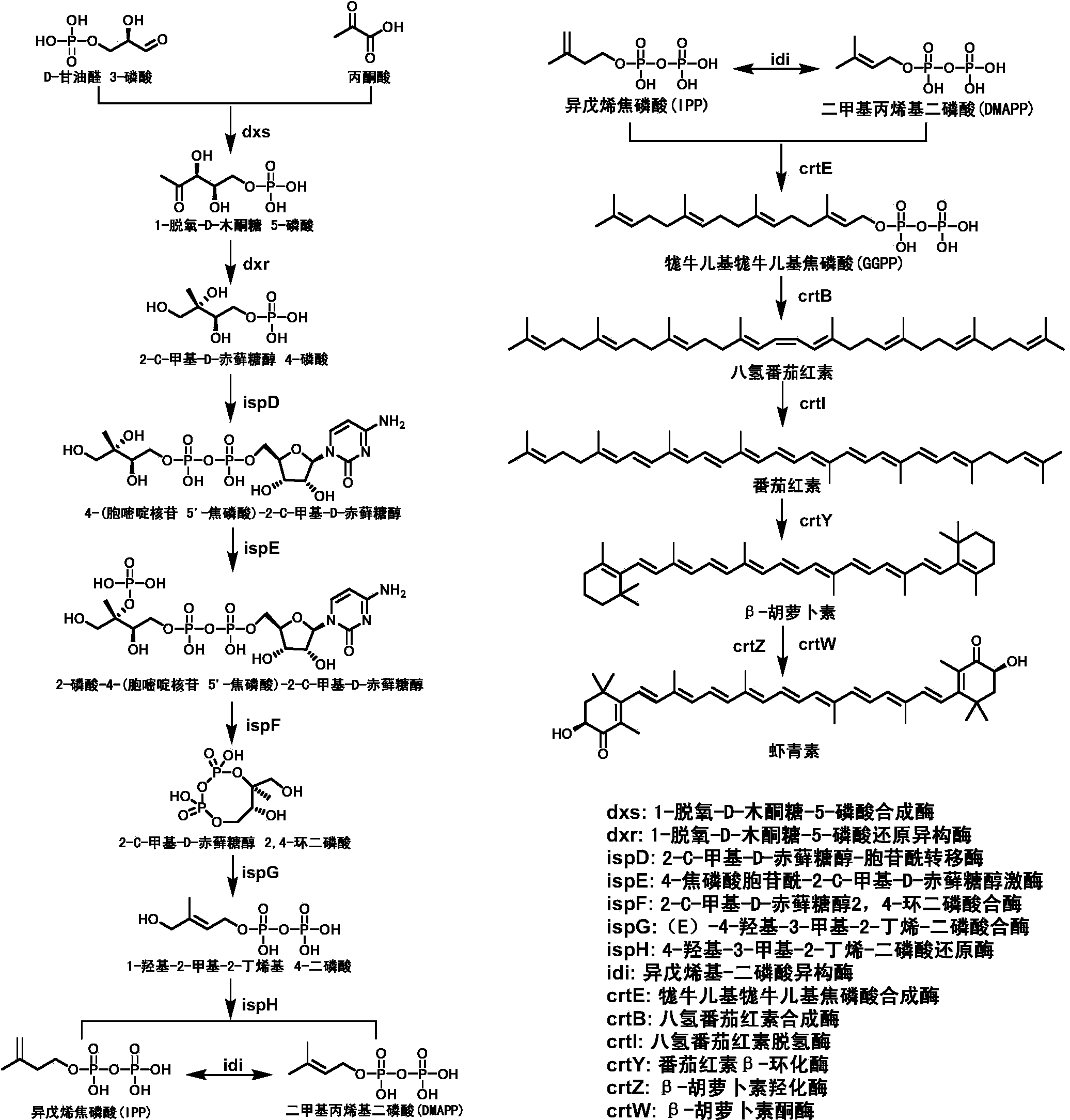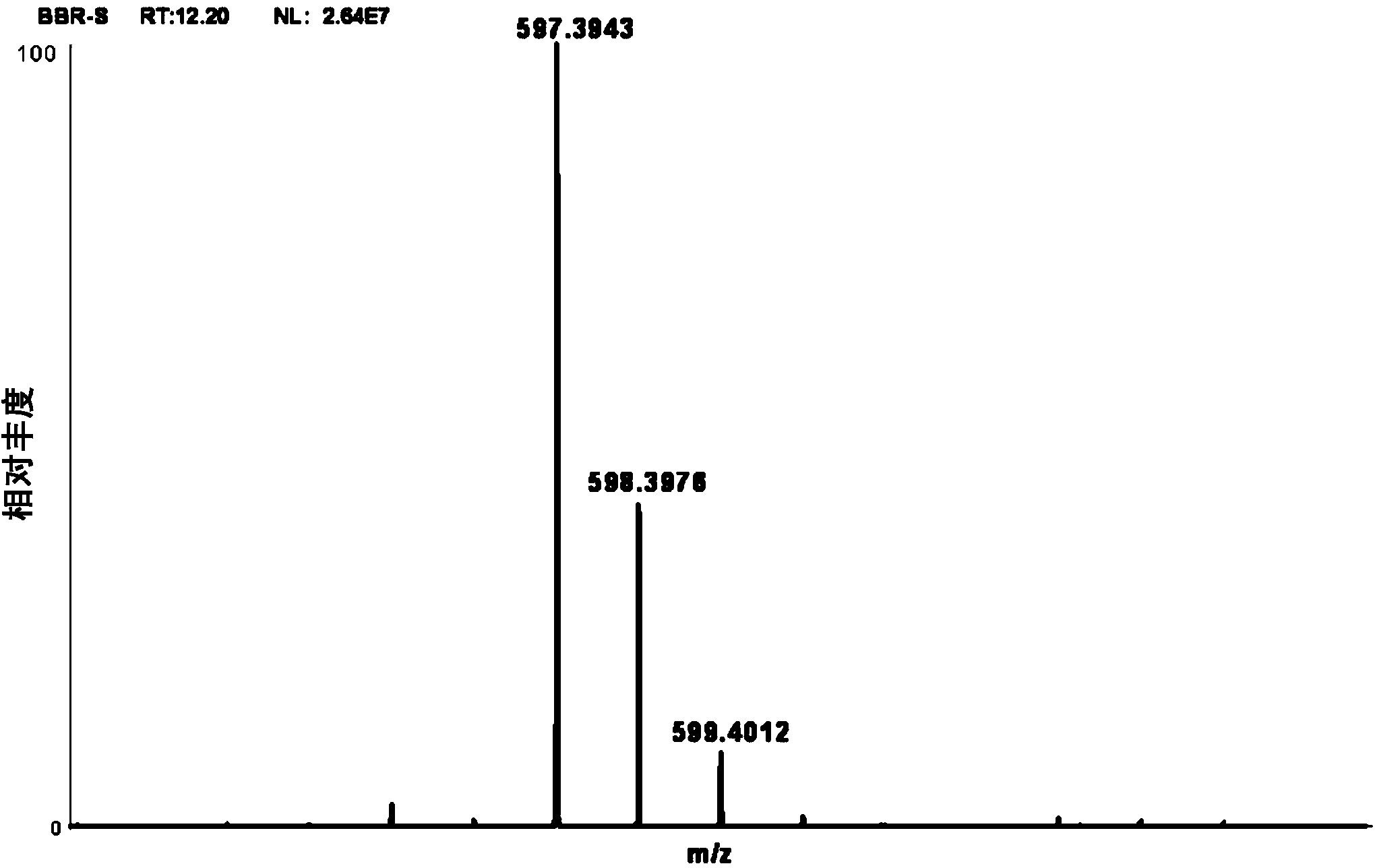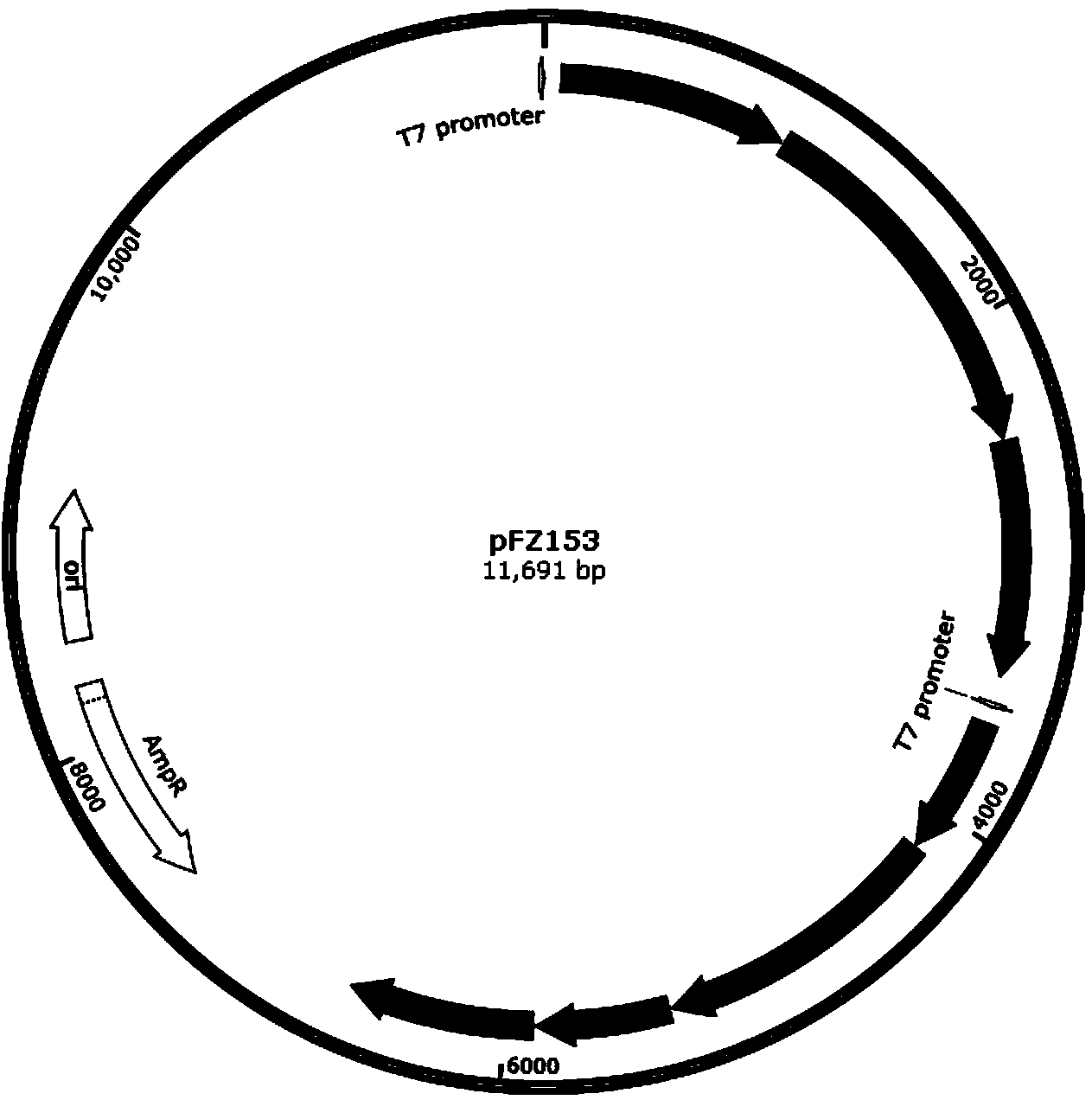Astaxanthin synthetase of sphingomonas, encoding gene of astaxanthin synthetase and method for genetic manipulation of sphingomonas
A technology of sphingomonas and coding genes, applied in the field of astaxanthin biosynthetic enzymes and coding genes, genetic manipulation, to achieve the effect of enriching gene diversity
- Summary
- Abstract
- Description
- Claims
- Application Information
AI Technical Summary
Problems solved by technology
Method used
Image
Examples
Embodiment 1
[0043] Example 1 Detection of Astaxanthin Products in Sphingomonas
[0044] Sphingomonas Sphingomonas Metabolites of ATCC 55669 (purchased from ATCC) as follows:
[0045] The strains were activated on #272 medium plate (nutrient broth 8g / L, glucose 5g / L, agar 1.6%) and cultured at 26°C. Pick the colony and culture it in 5mL #272 medium (nutrient broth 8g / L, glucose 5g / L) at 26°C and 220rpm. After 24 hours, transfer to 100mL #272 medium for culture at 26°C and 220rpm, OD 600 At 0.8, transfer to 300mL #272 medium for culture at 26°C and 220rpm, and collect the bacteria after 60h.
[0046] Centrifuge the bacterial solution at 8000rpm for 10min, collect the bacterial cells, add 10mL extractant (V 丙酮 :V 甲醇 =4:1), shake to break up the cells, extract for 10min, centrifuge at 8000rpm, 4 ℃ for 5min, remove the supernatant, and extract 3 times according to the above steps, collect the supernatant, spin dry, add 3mL acetone to dissolve, and centrifuge at 13000rpm for 10min , take ...
Embodiment 2
[0047] Example 2 Determination of related astaxanthin biosynthesis genes in Sphingomonas
[0048] As can be seen from Example 1, Sphingomonas Sphingomonas ATCC 55669 can produce astaxanthin, and this strain contains a biosynthetic pathway capable of producing astaxanthin. Comparing the genome information of Sphingomonas in NCBI (http: / / www.ncbi.nlm.nih.gov / ) Blastp, it was found that there is a MEP pathway in Sphingomonas, which starts from pyruvate through dxs , dxr , ispE , ispDF , ispG , ispH Synthesis of IPP and DMAPP. IPP and DMAPP are passed through the carotenoid synthesis pathway crtE , crtB , crtI , wxya , crtZ , wxya Generate astaxanthin. In this linear pathway for astaxanthin synthesis by Sphingomonas, the resulting genes except crtE , crtZ , all other genes are unique.
Embodiment 3
[0049] Example 3 Sphingomonas crtE gene and crtZ gene amplification
[0050] Sphingomonas Sphingomonas Genomic DNA is extracted from ATCC 55669, and the extraction method is as follows:
[0051] (1) Take 50mL of fresh bacterial liquid to a conical centrifuge tube, centrifuge at 7000rpm×5min, and discard the supernatant.
[0052] (2) Add 10mL of ddH 2 O, break up on the shaker, centrifuge at 7000rpm×5min, and discard the supernatant.
[0053] (3) Add 10mL of SET buffer (75mM NaCl, 25mM EDTA, 20mM Tris-Cl), disperse on a shaker, centrifuge at 7000rpm×5min, and discard the supernatant.
[0054] (4) Add 5mL of SET buffer, shake it up on a shaker, add 150μL of lysozyme (lysozyme, 100mg / mL, -20°C), bathe in 37°C water for 30-60min, shake slowly every 5-10min, Until the cell wall is completely lysed (to identify the cell wall is completely lysed: take a small amount of bacterial liquid, add 1 drop of 10% SDS, the bacterial liquid is clear and silky).
[0055] (5) Add 10 μL ...
PUM
 Login to View More
Login to View More Abstract
Description
Claims
Application Information
 Login to View More
Login to View More - R&D
- Intellectual Property
- Life Sciences
- Materials
- Tech Scout
- Unparalleled Data Quality
- Higher Quality Content
- 60% Fewer Hallucinations
Browse by: Latest US Patents, China's latest patents, Technical Efficacy Thesaurus, Application Domain, Technology Topic, Popular Technical Reports.
© 2025 PatSnap. All rights reserved.Legal|Privacy policy|Modern Slavery Act Transparency Statement|Sitemap|About US| Contact US: help@patsnap.com



